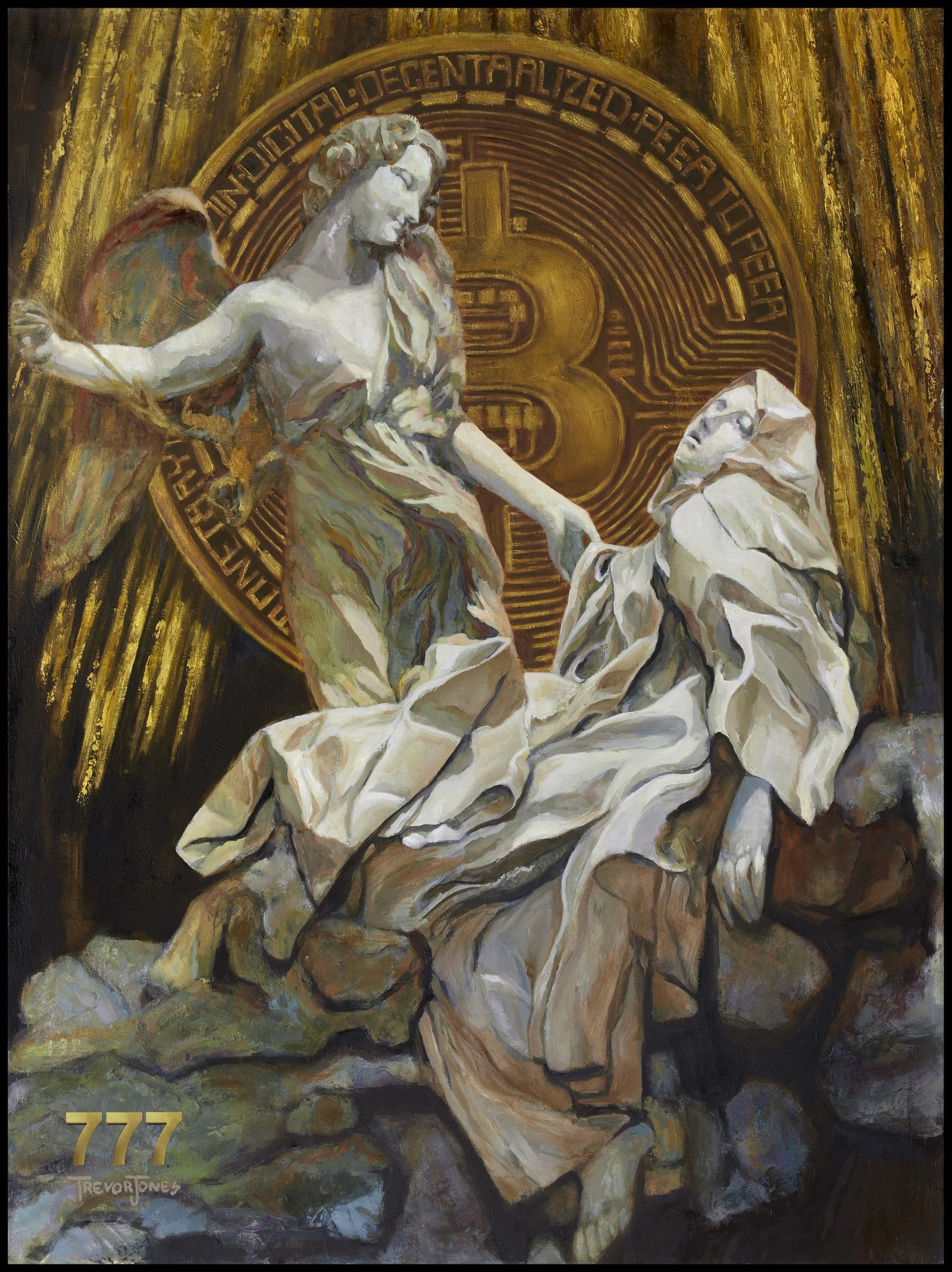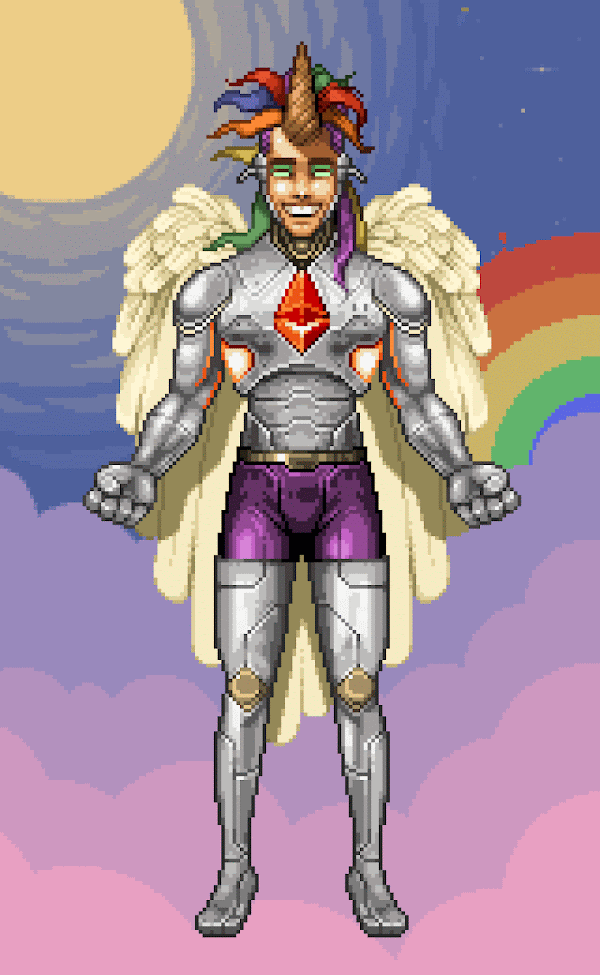NFT EDITIONS: GREAT FOR ARTISTS, BUT HOW ABOUT COLLECTORS?

MAY 3RD, 2022
Some artists like to focus on 1 of 1 NFT artworks, but more and more, artists are releasing their work as editions. This is a wise strategy for the artist as they potentially get their art into the hands of more collectors. In her article NON-FUNGIBLE SOUP: NFTS AND EDITIONS, Wanda Oliver outlined the benefits. ‘I’d like to offer my work in several sizes, price points, and edition sizes targeted to different buying audiences. I might want to offer different licensing conditions for each of the edition types or different perks for collectors of each.
However, is it right for collectors? Are they buying something rare or paying over the odds for something common?
When I started collecting two years ago, I focused on 1/1 NFTs. Marketplaces like SuperRare, where all the art is 1/1 made this easy. One of my favorites is Abel by MarE; the dark reimagining of a good man subsequently killed by his jealous brother Cain whose labor was regarded as less worthy in the eyes of God. This NFT has no roadmap, utility, or community. But arguably, it is an exquisite, unique piece of art and, by definition, ‘super rare.’
I started to see small editions appearing like #1/3 and #1/8. I needed to create parameters for buying.
My thinking was:
1/1 = Super rare
1/10 = Rare
11+ = Common
So I decided to extend my collection to include editions, but only where there were ten or less minted. This made my decisions easier as I could quickly disregard any NFTs with over ten editions.
Then I became aware of CryptoPunks. With its 10,000 NFTs, this didn’t fit my criteria, so I didn’t pay much attention to the project. Back then, CryptoPunks were given away for free!
Some artists ask me for advice on whether they should create a 1/1 or editions. My advice, do both. 1/1 for whale collectors and editions for fans on a more limited budget. Edition flippers can be helpful to show evidence of a healthy secondary market for collectors. Plus, the artist gets a steady stream of royalties. Everyone is happy.
Next question, how much to charge for editions? Let’s assume an artwork took 10 hours to create, and the artist wants $1,000 for the time they’ve spent. Sounds fair. But if they sell 100 editions. Is each edition worth $1,000? Should the artist still aim to make $1000 in total from the sale of all 100 NFTs? That would make them $10 each. Or there is a third option. As it takes more time and resources to mint multiple NFTs than a 1/1, we can assume a fair middle ground to the artist and collectors.
Is there any significance on the number within the edition? Should #1/1000 identical NFTs be valued higher than other editions as it was the first minted? Similarly, should the #1000/1000 be more valuable as it’s the last ever of that NFT to be minted? These seem universally accepted.
But the merits of other edition mint numbers are debated in collectors groups within projects. I’ve seen collectors state the case to attach value to all sorts of variations within an identical collection, usually because that collector owns a specific edition number.
Should lower edition numbers be more valuable? At what point do lower number mints not matter. What about angel numbers: 333, 777, 888 etc?
Alternatively, are all editions equally special irrespective of their number?
These questions are subjective, but here is one school of thought on how much more value lower mint numbers offer:
Under 100 = Rare and should be priced much higher.
100 to 500 = Premium of 20-25%.
500+ = floor price.
What about open editions? Beeple was one of the earliest artists to experiment with an open edition. I’ve written about this in my previous article Pitfalls Of NFT Collecting.
One of the earliest and most successful was FACES by 3LAU, with 4,934 editions minted. In an experiment to increase rarity, OPERATION: MELT FACES encouraged collectors to burn one or more of their FACES NFTs in return for a new rarer NFT. 1,363 editions were burned, reducing the total supply, and only 3,571 remain. It was anticipated that a reduction of 28% of the supply would lead to the remaining FACES NFTs rising proportionately in value. However, this didn’t happen, and initially, after the burn, sale prices fell.
The Bitcoin Angel (Open Edition) minted 4,158 editions in February 2021. While not scarce, the Angel provides excellent utility and collectors have the right to exclusive NFT drops. Plus, an invitation to the most exclusive party in the NFT calendar. A meet-up with some of the most prominent NFT artists, including Trevor Jones in a Scottish Castle for arty chat, free signed prints, whisky and more. Artist Trevor Jones was against burning Angels to increase scarcity. Instead, he came up with a project where Bitcoin Angels collectors have the opportunity to ascend 5, 10 or 20 Angels to the gates of heaven and receive a more limited animated gold, silver or bronze Angel with heavenly utility. The ascension could reduce the total supply of the open edition by up to 950 Bitcoin Angels.

The Bitcoin Angel (Open Edition) by Trevor Jones
Crypto Finney has long had a burn mechanism to upgrade NFTs from the standard Finney through bare metal, BTC miner and the ultimate Unicorn Finney, which is super rare and has utility to earn staking rewards.

But I have a confession to make. I don’t want to part with my original NFTs. I’m a HODLer and struggle to burn a Finney Coin as I consider it a thing of beauty. There is also gamification at play. I know the total number of Finney Coins minted will only ever be 5,000, so retaining my coins is like having an unused scratch-card. If I burn it, I might get a common Finney. But if I put the Finney Coin up for sale, people may be willing to pay more for the chance that it will reveal a Gold Finney when burned.
The Crunks are 10,000 degenerate profile picture (pfp) NFTs on the Terra blockchain and will soon be capable of burning some and upgrading to own a Crunk car or female Crunks.
The remaining original NFTs become rarer with every burn, so win/win, right?

The grey area comes when a project has 10,000 unique NFTs. While the exact traits of your NFT are 1/1, there are 9,999 other similar NFTs that people may choose to buy on the secondary market instead of yours. In most projects, you don’t get to choose the traits of your NFT during the initial minting process, which is a lucky dip. Only once your NFT is in your wallet and revealed do you know if you’ve been lucky enough to draw an NFT, which includes rarer traits or attributes present in a smaller percentage compared to others in the collection. Being allocated an NFT with rare traits, aliens, skeletons, etc., is harder to come by and is like winning the lottery. This can significantly increase their value on the secondary market as everyone can appreciate their relative scarcity within the collection. As a result, rarity is closely connected with value in the NFT space.
Several tools are available to check, including Rarity Sniper, Rarity Tools and Trait Sniper.
If rarity is vital to you, it is best to wait and buy what you want on the secondary market.
A project on the Songbird Network was the first to revolutionize the lucky dip minting process. The Bored Apes SGB project is the first ever user generated NFT collection and allows collectors to purchase shuffle credit NFTs. Each pack contained five shuffles, and an unlimited number of packs could be bought in the Kings Of Strategy Ape Generator in partnership with NFT platform Best FTSO. Enabling collectors to browse various NFTs still to be claimed and hit the mint button when presented with an ape that is either aesthetically pleasing or looks rare. In addition, there are six possible ape collections to choose from that can be toggled on/off for individual shuffles depending on whether you are interested in Flare Finance apes, jewelled apes or lady apes. The project was originally for 10k apes but 2,500 have been burned.

There’s art for all tastes and budgets. While 1/1 art is super rare, there is something to be said for the benefits of belonging to an NFT community with people who share your taste in art. This is what made BAYC so successful. As writer Oscar Wilde said, “Nowadays people know the price of everything and the value of nothing.” Having a verified owner’s account in a project’s Discord server and sharing thoughts in owners-only channels is difficult to put a price on.


